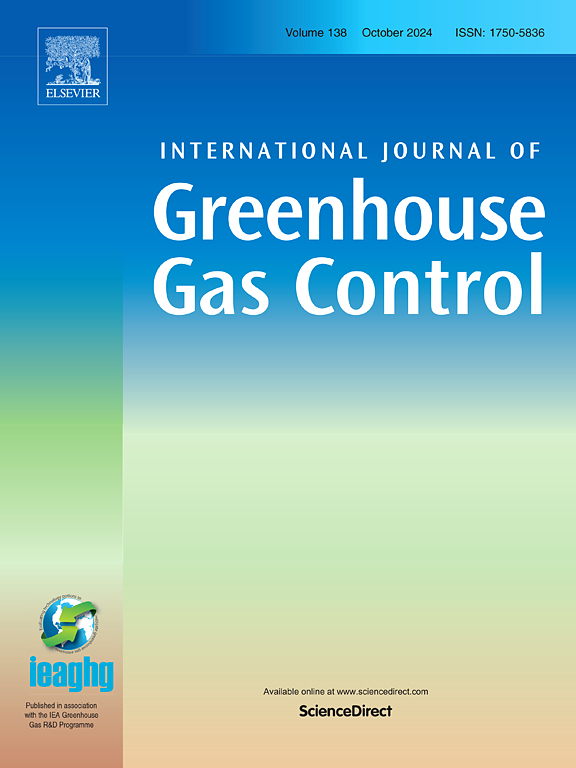CESAR1溶剂模型的开发和工厂验证,重点是水洗涤条件
IF 5.2
3区 工程技术
Q2 ENERGY & FUELS
International Journal of Greenhouse Gas Control
Pub Date : 2025-08-27
DOI:10.1016/j.ijggc.2025.104454
引用次数: 0
摘要
CESAR1是1.5 M哌嗪(PZ)和3.0 M 2-氨基-2-甲基-1-丙醇(AMP)的水共混物,具有取代单乙醇胺(MEA)作为水胺碳捕获基准溶剂的潜力。这主要是由于最近发表的文献显示CESAR1将过程能量需求降低到低于MEA的水平。为了正确地评估CESAR1作为MEA替代品的商业潜力,需要精确的过程模型。当CESAR1首次出现时,关于溶剂混合物的物理性质和热力学数据很少。然而,随着CESAR1受到越来越多的关注,越来越多的溶剂数据被发表。在本研究中,ProTreat®过程模拟器的CESAR1模型更新了最近发表的文献数据,以及作为燃烧后捕集厂可持续运营(SCOPE)项目的一部分生成的数据。更新后的模型随后用RWE Niederaussem中试工厂的数据进行了验证。结果表明,ProTreat®的预测结果与中试工厂的8个案例数据高度一致,测试了不同的溶剂流速、目标捕获率和吸收能力。因此,基于传质率的CESAR1模型得到了验证,该模型可作为行业成员和研究人员进一步评估CESAR1商业潜力的工具。本文章由计算机程序翻译,如有差异,请以英文原文为准。
Development and plant validation of a CESAR1 solvent model with an emphasis on water wash conditions
CESAR1, an aqueous blend of 1.5 M piperazine (PZ) and 3.0 M 2-amino-2-methyl-1-propanol (AMP) has shown potential to replace monoethanolamine (MEA) as the benchmark solvent for carbon capture with aqueous amines. This is largely due to recently published literature showing CESAR1 reducing the process energy requirement below that of MEA. To properly evaluate CESAR1’s commercial potential as a replacement for MEA, accurate process models are required. When CESAR1 first emerged, little physical property and thermodynamic data was available on the solvent mixture. However, as CESAR1 has attracted more attention, an increasing amount of solvent data has been published. In this study, the CESAR1 model of the ProTreat® process simulator is updated with recently published data from literature, and data that was generated as part of the Sustainable Operation of Post-Combustion Capture Plants (SCOPE) project. The updated model was then validated with data from the RWE Niederaussem pilot plant. Results show high agreement between ProTreat® predictions and pilot plant data across eight cases testing different solvent flowrates, target capture rates, and absorption capacity. As a result, a mass-transfer rate-based CESAR1 model is validated, which can be used as a tool for industry members and researchers to further evaluate the commercial potential of CESAR1.
求助全文
通过发布文献求助,成功后即可免费获取论文全文。
去求助
来源期刊
CiteScore
9.20
自引率
10.30%
发文量
199
审稿时长
4.8 months
期刊介绍:
The International Journal of Greenhouse Gas Control is a peer reviewed journal focusing on scientific and engineering developments in greenhouse gas control through capture and storage at large stationary emitters in the power sector and in other major resource, manufacturing and production industries. The Journal covers all greenhouse gas emissions within the power and industrial sectors, and comprises both technical and non-technical related literature in one volume. Original research, review and comments papers are included.

 求助内容:
求助内容: 应助结果提醒方式:
应助结果提醒方式:


